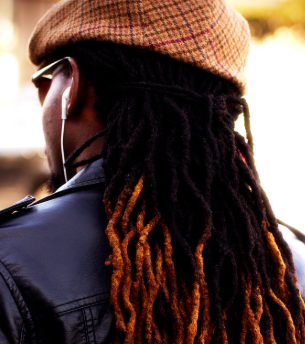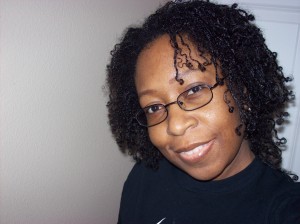If you’ve done any amount of research on the subject of locs or locking, you know there are about 5-6 ways to go about it. More than that if you count the various offshoots of some foundational methods.
Now you’re left to wonder which method is best.
Depending on who you ask, the answer varies.
While some are biased and will go as far as pitting one method of starting locs against another, there really is no “best method” overall.
So rather than ask which method is best, ask…
“Which method is best for ME?”
How do you determine the right method for you?
There are a few factors you’ll want to take into consideration when deciding how to start your locs:
– Lifestyle: Which of your daily activities may affect your hair such as: frequent working out, swimming, etc.?
– Hair length: Is your hair long, short, or medium?
– Hair texture: Is your hair extremely soft and curly, wavy, straight or coarse and tightly coiled?
– Personal aesthetics: Do you want your locs to be perfectly groomed & manicured, do you want them more on the “wild”, natural side or somewhere in between?
Once you’ve determined those things, take a look at the various methods and choose the one that best fits your needs and personal preference.
6 of the Most Popular Methods of Locking
The following is a list of the most common ways to start locs. There are others, but they’re more than likely nothing more than offshoots of these basic, foundational methods.
1. Comb coils
While this method is very popular for hair that is too short to braid or 2-strand twist, you can use it on any length of hair – long or short. One single-strand twist is made in small to medium sections of the hair using a locking product such as gel or beeswax. This is also the technique used when palm rolling the roots.
Your hair may take longer to lock, due to the fact that the coils unravel a lot during shampooing – which is why scalp cleansing with an astringent such as Witch Hazel is often recommended until the locs settle enough to shampoo without disturbing them too much.
In the beginning stages, your coils may unravel and can begin to look very fuzzy and wild. Although this is part of the process, many people do not wish to deal with this stage.
While any hair texture that has a natural curl/wave/coil pattern can be locked using this method, I’m of the opinion that tightly coiled hair is best and would unravel the least.

2. Two-strand twists
Most lock-wearers choose this route to start their locks because they hold up better than single strand twists (comb coils). They work well with most hair lengths and textures, but probably best for curly or wavy hair patterns.
The hair is sectioned and twisted with two strands of hair as opposed to one. The twists look very nice when first done and when they mature, they produce very beautiful locks.

3. Braids
Another method of starting your locs is to braid the hair into small to medium-sized plaits.
This option is excellent for those whose hair may not hold up well in coils or twists, or those who desire to be able to shampoo their hair sooner than normally recommended with single or double-strand twists.
You can maintain braidlocs in the same manner as other locking methods, such as palm rolling, free-forming, or interlocking.

4. Interlocking
Interlocking is achieved by creating starter locs with a woven pattern, using an implement such as a latch hook, crochet needle, or locking tool designed for interlocking.
This method generally holds up better than other methods. And while they can still unravel, it’s nowhere near as much as other methods.
When you start your locs by interlocking, you can use the same technique for maintenance. In fact, this can be a great way to retighten locs started with any method.
If you have relaxed ends or a straighter texture of hair, you may find this to be the better option, though it works great on any hair texture.

5. Guided Freeform
You can start guided freeform locks using one of the aforementioned methods, but without retwisting or tightening the roots. You can, however, separate the locs when they start trying to join/marry together.
Although the roots do eventually lock up on their own, there is typically an inch or so of “mini-fro” at the base of the locks. Some people prefer this look, while others don’t care for the puffy roots. Personally, I love this look!

6. Organic/Natural Freeform
With organic locks, you would start off with all natural hair, usually short to medium length.
Wash your hair and allow it to form into locs on its own. You may also wish to start with the “rub method” where you use your hand, a damp cloth, or a styling sponge and rub your hair in a circular motion until it separates into chunks.
However, I’ve seen people start off with coils, twists or braids, then allow the locs to do what they do.
Either way you start organic freeform locs, shampoo and moisturize regularly, but don’t twist or separate the roots.

The ball’s now in your court!
Based on this knowledge, you can make a decision as to which method of locking you’d want to use.
Again, there is no “best method” of starting locs overall, only what’s best for you.
If you’re still unsure, you may wish to schedule a consultation with a few Lociticians in your area. But ultimately, the decision is yours.
You may also wish to check out my article, “3 Things You Should Do Before Locking Your Hair“.
Blessings & Warmest Regards,